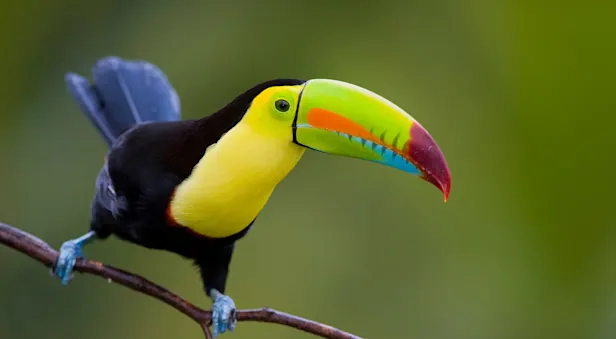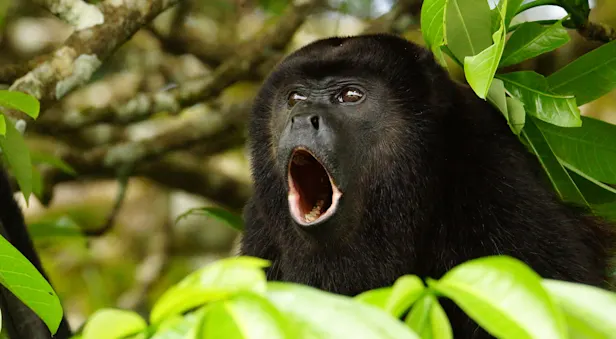Know Before You Go
Crocodile & Caiman Facts | Costa Rica Wildlife Guide
Many travelers who visit Central America hope to spot a crocodile or caiman—the smaller cousin of the crocodile. Spectacled caimans are the most common crocodilians and are also one of the smallest, typically only reaching 3.9 to 6.6 feet in length. Caimans can be found basking on the banks of fresh-water riverine habitats, in the brackish water of mangrove swamps, and in some saltwater environments. They inhabit the lowland wetlands in Costa Rica on both the Pacific and Atlantic coasts.
Caimans remain camouflaged beneath the water’s surface, as they intake breath through their raised nostrils. Their blue-green scales blend into their surroundings when they hunt for crustaceans, mollusks and fish. Despite their concealment, caimans, as well as crocodiles, face threats from the outside world, as humans hunt them for their skins, their habitats are degraded, and their nests are destroyed by people and predators such as foxes, dogs and basilisk lizards.
A small population of crocodiles lives along the coasts of Costa Rica. Though the deadliest crocodiles inhabit other regions—including Southeast Asia’s saltwater crocodile, the American crocodile and the Nile crocodile—attacks from Costa Rica’s crocodiles have been recorded, and it is advisable to speak with local guides before swimming in lagoons and estuaries.
Crocodiles, despite their murderous tendencies, are biologically complex creatures and are devoted to their offspring. Despite origins tracing back to the time of the dinosaurs, the crocodile has a highly developed brain with a cerebral cortex, which other reptiles lack. Parents are dedicated nurturers, caring for their hatchlings for more than one year. It is likely the image of the crocodile’s razor-sharp, snapping jaws, and a stigma of its ruthlessness that has contributed to the lack of interest that has brought international support for other reptiles such as the sea turtle, and therefore, their future is much less secure.
Header Credit: Guillermo Knell


























